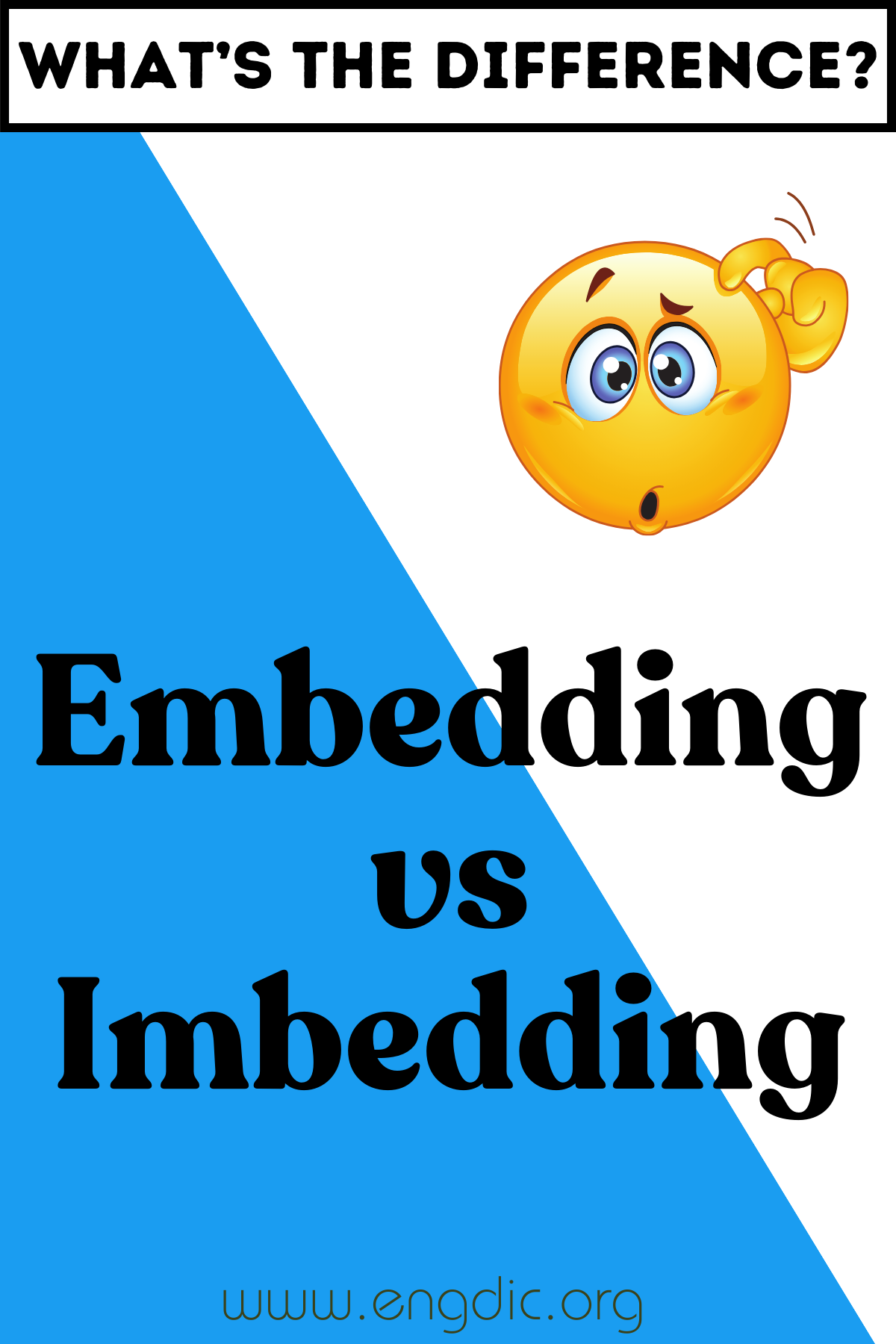“Embedding” and “Imbedding” are variant spellings of the same word, both used to describe the act of deeply inserting or incorporating one thing into another. While “embedding” is the more widely accepted and commonly used form in modern English, “imbedding” is considered an archaic or less frequent alternative.
The context of their usage generally revolves around the idea of firmly placing or integrating something within a structure or system, whether physical or metaphorical.
Embedding
Definition: Embedding refers to the act of inserting or fixing an object firmly and deeply into a surrounding mass or context.
Usage:
- Technical Contexts: In computer science, embedding refers to the insertion of multimedia content (like videos) within webpages. Example: The developer is embedding videos directly into the website.
- Physical Contexts: In geology or archaeology, it can refer to fossils embedded in rock layers. Example: The fossils were found embedded in the sedimentary rock.
- Figurative Contexts: In a metaphorical sense, it means integrating an idea or concept firmly within a system. Example: Ethical practices are deeply embedded in the company’s culture.
Imbedding
Definition: Imbedding is an archaic spelling of embedding, meaning the same thing: to fix firmly and deeply within a surrounding mass.
Usage:
- Historical Usage: Imbedding appears in older texts, representing the same actions as embedding, but it is now outdated. Example: The architect spoke of imbedding ornate sculptures within the temple walls.
- Literary Usage: In classical literature, imbedding often carries the same meaning but with a historical context. Example: The story spoke of treasures imbedded deep within the cave.
In contemporary writing, “embedding” is the preferred spelling due to its modern usage and recognition.







